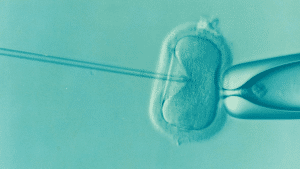First comes love, then comes marriage, then comes…infertility? While infertility affects 1 in 8 couples, unless it happens to you, it’s hard to imagine how you’ll handle it. With so many options for fertility treatment it can be discouraging, overwhelming, and downright stressful. Let’s see what your options are available to get you on the road to the family of your dreams.

What is infertility?
Infertility is a disease of the male or female reproductive system defined by the failure to achieve a pregnancy after 12 months or more of regular, unprotected sexual intercourse. The 2 most common fertility treatments are IUI (intrauterine insemination) and IVF (in vitro fertilization).
Intrauterine insemination
The first treatment doctors usually suggest if you’re facing infertility is intrauterine insemination (IUI). IUI is a type of artificial insemination that helps healthy sperm get closer to an egg when it’s released by an ovary. IUI coupled with ovulation-inducing medication is usually the first treatment for unexplained infertility. It’s also the fertility treatment option that is generally tried first if a woman needs to use donor sperm, has endometriosis-related infertility, or if the woman’s cervix is preventing sperm from reaching the egg. IUI is relatively safe, straightforward, and quick. From start to finish, one cycle lasts about 28 days (the same as a menstrual cycle). The procedure itself only takes about 10 minutes and once it’s over you can go about your day without any restrictions. While the total price varies, one IUI cycle costs between $500 and $4000. It can take multiple attempts and depending on the type of insurance you have, some, not all costs may be covered. IUI is often required to have been attempted for insurance companies to cover in-vitro fertilization (IVF).
In-vitro fertilization

IVF is another type of fertility treatment and while it’s the most effective, it is very time-consuming, expensive, and invasive. In most cases this is why other fertility treatments are often tried first. IVF involves a lot of blood tests, ultrasounds, and hormone injections before eggs are collected and fertilized with sperm to create embryos. Once fertilized the embryos are transplanted and then 9-12 days after a pregnancy test is given. There is a 20-35% success rate per cycle and three full cycles increases success to 45-53%. On average, a cycle costs between $12,000-$15,000. As mentioned before, insurance companies may only cover IVF if a certain number of IUI’s have proven unsuccessful so be sure to get all the details of your plan. If IVF is covered by insurance, different insurance companies may have policies in place regarding the preferred number of embryo transfers at one time. While the intricacies are difficult to navigate, rest assured there are options available to cover the costs associated with these 2 common treatments.
We can help!
If you find yourself struggling with infertility it is smart to make sure you have the best insurance plan for your needs first. Speak to an EZ agent to see what plans are available in your area and what coverage options they have for different levels of infertility treatments. Next, talk to your gynecologist and see if they can refer you to a specialist who can get you started on a fertility plan that works best with your insurance coverage to minimize the out of pocket costs. Starting a family is an exciting journey, but you shouldn’t have to dampen the mood with overwhelming bills. Make sure you have the best coverage for your fertility journey by speaking to an EZ agent today. To get free instant quotes, simply enter your zip code in the bar above, or to speak to a local agent, call 888-350-1890.


